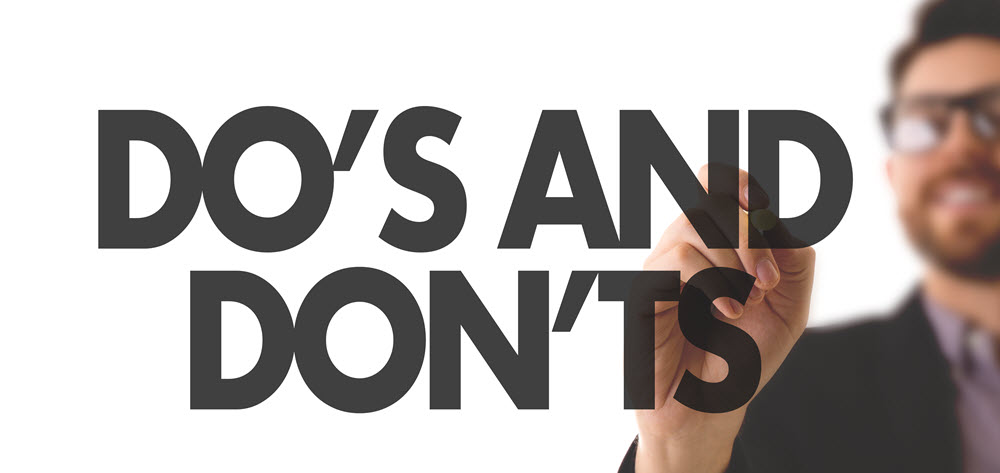
Forecasting has been woven inexorably into the fabric of almost all companies across America over the past fifty years. It is safe to say that most business leaders would argue that high quality sales forecasting is an indispensable activity within their organization. They rely upon the forecast to support myriad key business decisions, including (but certainly not limited to) procurement, scheduling staff, capital investments, and production planning.
Senior managers, especially in companies who are struggling to meet their sales and profitability plans, complain frequently about the quality of those forecasts. When surplus inventory accumulates, the forecast is frequently blamed. On the other hand, when financial performance fails to meet expectation, or when the company suffers from stock-outs on key items, many eyes turn to the forecast as the root cause of the problems.
Indeed, it is an axiom that "the only sure thing about the forecast is that it is going to be wrong." Is a perfect forecast achievable? The answer to that question is likely "no."
We mustn’t throw our collective hands in the air and surrender to the notion that a good forecast is a fantasy. A “better” sales forecast is always achievable, if we are committed to its importance, and if we are willing to do the work. We just need to know where to look for the real causes of poor forecasts.
In fact, the “bad guy” in our business process might not be the forecast at all. It might be the manager that we see when we look in the mirror each morning. The manager, perhaps, who does not take accountability for the assumptions that lie beneath the forecast.
So here are some tips – some “do’s” and “don’ts” – regarding forecasting that might give company managers a hint regarding how to improve the process going forward:
DO assign accountability for the forecast to the appropriate functional area in the company. Many argue that the sales forecast should be owned by Sales and Marketing. Fair enough, since this area has best access to market intelligence. But if this functional area lacks the expertise or objectivity to develop a good, unbiased forecast, Supply Chain might be a good alternative. Further, assign accountability for the assumptions that underlie the forecast, as well as the forecast itself.
DON’T assign accountability for the forecast to an inexperienced, junior staff member. Developing a good forecast requires business acumen, and understanding of the market forces that affect sales, product knowledge, and a solid appreciation for the operational strategy of the company.
DO prepare and revise the forecast according to a strict and regular schedule. The appropriate frequency of revisions is a delicate question, and each company needs to seek balance. Many companies find that a monthly schedule works well, which allows sufficient time to acquire and understand the relevant data. Revising more often than once per month can cause system nervousness, possibly triggering many problematic changes to the schedule. On the other hand, confronted with having to forecast a seasonal product with compressed sales profiles, the analyst may find that a weekly forecast is appropriate.
DON’T forecast and revise in a haphazard way. If the process is not regimented, distortions can creep into the data that will wreak havoc with its quality.
DO collaborate with stakeholders within the company, as well as with customers and suppliers. Work with customers to understand what their customers (often consumers) are doing. If a company’s customers are retailers, attempt to gain access to point-of-sale and inventory data. This provides a true measure of how successful your products are performing, in the eyes of the consumer.
DON’T forecast in a silo. No individual will be able to comprehend all of the market forces at play. A team approach is critical. Avoid fragmentation of responsibilities for the sales forecast to numerous departments.
DO challenge the numbers. Purify the input data. Look for outliers and account for them. Always perform sanity checks, and ask: “do these data look reasonable under the circumstances?”
DON’T blindly accept input data or the resulting forecast. Has something happened in the business environment to cause distortions in the data? Was there an unplanned promotion? Did inclement weather impact sales? Has the forecast analyst overlooked some externality? Did stock-outs in the past distort historical sales?
DO pay very special attention to new product launches and promotional activity, which usually must be forecast separately from the regular stream of forecasts. Will new product introductions cannibalize sales of other related products? Will promotions shift the balance of sales within the product mix? Does sales history exist for similar products that have been sold under similar circumstances? A high level of subjective input is endemic with forecasting demand for new products and promotions, and they therefore carry a special kind of risk.
DON’T paint every item with the same forecast brush. Some products are best forecast using a seasonal index approach. Others exhibit stable trends and fit regression analysis particularly well. Sales for each product family can respond differently to market dynamics—it is up to the business to understand these influences.
DO use technology. Work with a software provider to select a product that best suits your business realities. The advantages that software provides include processing speed, data integrity, and high levels of mathematical sophistication. Software can also provide a user-friendly intuitive environment that allows the analyst to manipulate the output and conduct what-if analysis. It will also help users to record special events and unusual externalities that might have distorted sales history.
DON’T treat every item in the company’s sales portfolio with the same level of scrutiny, unless the business’ product range is very limited. When an analyst is tasked with forecasting hundreds or thousands of items, there exists a danger of becoming overwhelmed by the volume of data that is available. ABC Analysis, using Pareto’s Law (the 80/20 Rule) helps the forecaster to focus attention on those products that are most important to the business. Collaborative forecasting might be an appropriate tool to use for “A” items, but not for “B’s” and “C’s.”
And finally, DO measure forecast accuracy. The simple act of measuring forecast accuracy tends to improve the quality of the forecast. Management starts to pay attention to the forecast when it is measured, and start to ask questions about how the business might be able to improve it. Questions asked appropriately is an early step on the journey to continuous improvement.
A high-quality forecast is achievable. It will lead to better customer service, better sales results, lower inventories, and more confidence and stability within the business. Continuously working to improve the forecast is worth the effort.


